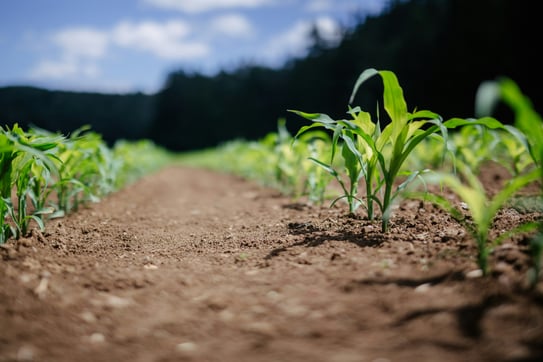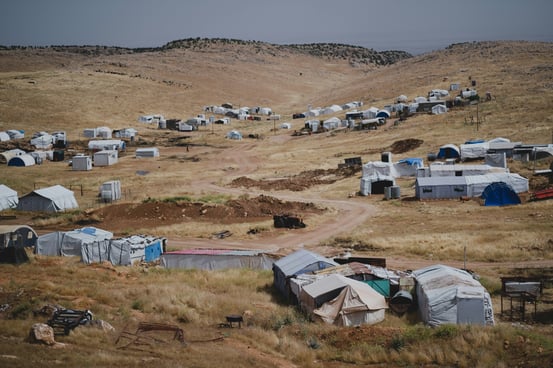Blurred Lines: The Multidimensional Effect of the Climate Crisis
The climate crisis is an ever-present reality and has become a consistent fixture in the global news cycle and daily lives worldwide.
While climate crises and emergencies are often discussed as singular events, their effects are lasting and significantly impact broader elements of society. The direct impacts of the climate crisis play a key role in shaping global trends. Climate emergencies have multidimensional effects and, as such, require a multidimensional approach to mitigation, adaption and responses.
Extreme weather conditions adversely affect communities, including drought, flooding, and cyclones. Their damaging effects on land and infrastructure often result in displacement and devastating crop yields. Areas of vulnerability, or ‘hotspots’, are home to approximately 1.6 billion people worldwide, and populations are estimated to double by 2050, increasing the number of people with a higher-than-average risk.
Worsening extreme climate emergencies are degrading the resilience of communities, from physical and ecological to socioeconomic and sociocultural systems. Livelihoods are increasingly at risk as the physical impact of habitat degradation decreases climate mitigation capability. The need for communities and individuals to be resilient is at an all-time high as shocks become more frequent and damage multiplies.

Impacts of the Climate Crisis
Agriculture
The climate crisis is having a significant impact on the agricultural sector worldwide. It is causing a decrease in crop yields, increasing pests, and shifting agroecosystem boundaries. This increase in heavy rains and elevated temperatures make it the perfect breeding ground for pests, causing a dramatic increase. According to the Food and Agriculture Organization (FAO), plant pests account for as much as 40% of global harvest loss annually, worth US$220 billion in economic losses. The rise in temperature has contributed to an increase in fall armyworm numbers, which typically target maize, a staple crop across many countries. It is estimated that in the absence of control methods, the fall armyworm can cause yield losses ranging from 8.3 to 20.6 million tons per annum in Africa’s 12 maize-producing countries alone.
Rising temperatures are also altering traditional agricultural practices and creating an inhospitable environment for crop success. In some cases, it is estimated that farmable land could be halved by 2050. Continued global population growth adds to this pressure on agricultural land, with experts estimating an increase in food demand of 50% by 2050 (FAO, 2024). Farmers worldwide must adapt agricultural practices and adopt more resilient approaches and crops to mitigate climate effects.
While this is manageable for some, it can come at a cost to vulnerable communities that employ traditional agricultural practices. The reduction in crop yields affects not only the industry and the global supply chain but can also have a devastating impact on these communities that rely on subsistence farming.

Displacement and conflict
In 2022, weather-related hazards triggered 98% of the staggering 32.6 million internal displacements worldwide due to disasters, such as floods, droughts, storms, landslides, and wildfires, marking a 20% increase from previous years (IDMC, 2023). A significant impact of drought is the depletion of water levels, often leaving communities without a reliable source. This lack of access to water pushes communities to the brink, forcing them to leave their homes in search of a more hospitable environment to settle and survive.
This displacement can have a knock-on effect on conflict within areas. Ethnic tensions over resource scarcity and land disputes are the root causes of some tribal clashes, leading to conflict and power struggles in some areas. Northern Kenya is a prime example, with nomadic herding tribes being forced to move locations more frequently in search of pasture and water, encroaching on already inhabited land. This strain and competition for scarce resources has led to ongoing conflict and unrest.

Health
Global health and the climate crisis are intertwined, but their relationship is complex. Extreme weather events caused by climate crisis, for example, can increase the spread of communicable diseases and make it harder to access healthcare facilities. On the other hand, the healthcare industry itself is a significant contributor to greenhouse gas emissions, responsible for 4.4% of emissions, with predictions of an upward trend by 2050. To learn more about this topic, you can read my colleague Tasmin Jones's Insight, "Between the Lines: Healthcare's Answer to Climate Change," available here.
People's movement also has significant impacts on health. In addition to displacement, as mentioned above, migration has become more frequent as people choose to move before they are forced to by a climate or other emergency. Limited access to proper hygiene and sanitation can increase vulnerability to disease, while limited access to healthcare can delay diagnosis and exacerbate the burden of non-communicable diseases. Experts recognise the need to better understand the drivers and mechanisms behind migration, including exposure, vulnerability, and adaptive capacity, to fully grasp the relationship between the climate crisis and health.

Nexus Approach
The acknowledgement that the climate crisis intersects with other development and humanitarian areas has led the sector to adopt a nexus approach in recent years. Previously, multilateral agencies, non-governmental organisations, civil society organisations, and foundations focused on one or two thematic areas, such as infrastructure, poverty, agriculture, health, or gender. However, a notable shift has been seen towards more comprehensive approaches to address the systemic nature of climate impacts.
Donors and multilateral organisations continually seek ways to support collaboration between different groups by providing cross-cutting grants. One example of this is the EU’s Resilience and Humanitarian-Development-Peace Nexus. This initiative was launched following EU Council Conclusions in 2017, and it aims to help people avoid unnecessary suffering and recover from protracted and predictable crises.
Another example is the Green Climate Fund (GCF), which provides grants categorised under the themes of mitigation, adaptation, or cross-cutting. Through its Investment Criteria, the Fund encourages its applicants to consider recipient countries' needs and contribute to regulatory frameworks and policies at the local and national levels, where possible, to promote a broader and lasting impact.
At an implementor level, NGOs and CSOs are increasingly adopting a consortium approach to programs. This collaboration of different areas of expertise has multiple benefits, including wider coverage, greater impact, and increased funding opportunities.
SRI Executive
‘The stark reality is that the Climate Crisis also affects every other aspect of development; if we do not fund it effectively, health, education, agriculture, and poverty alleviation will all suffer’. This insight from SRI Executive’s Co-Chair Seamus McGardle’s Navigating 2023 remains true for 2024. SRI Executive remains committed to supporting our current and future clients through search and consulting services to continue their work on the climate crisis across their focus areas.
We are continuing to explore how our clients are taking a nexus approach. Recently, my colleagues Grace Kohn and Apoorva Tyagi hosted a webinar discussing the intersection between the climate crisis and the ongoing pursuit of gender equality. Planet and People: Exploring the Link between Climate and Gender Dynamics had an esteemed panel with representatives from the Climate Investment Funds, the United National International Fund for Agricultural Development and the Institute of Peruvian Studies.
SRI Executives' clients span the development sector, from health to agriculture and donors to implementors. We utilise our insights and expertise to assist organisations in managing the shift to a nexus approach. We have experience facilitating partnership exploration for organisations who wish to combine efforts for greater impact. We have worked with those funding nexus work like the Green Climate Fund, Climate Investment Funds, and Inter-American Development Bank. SRI Executive has also placed Executive Directors, CEOs, and other executive staff with diverse and multidisciplinary backgrounds working towards combatting climate globally by bringing together their complementary expertise.
We will continue to explore the climate nexus through Insights and webinars over the coming months. Click to sign up to receive Insights and hear about upcoming events first.


